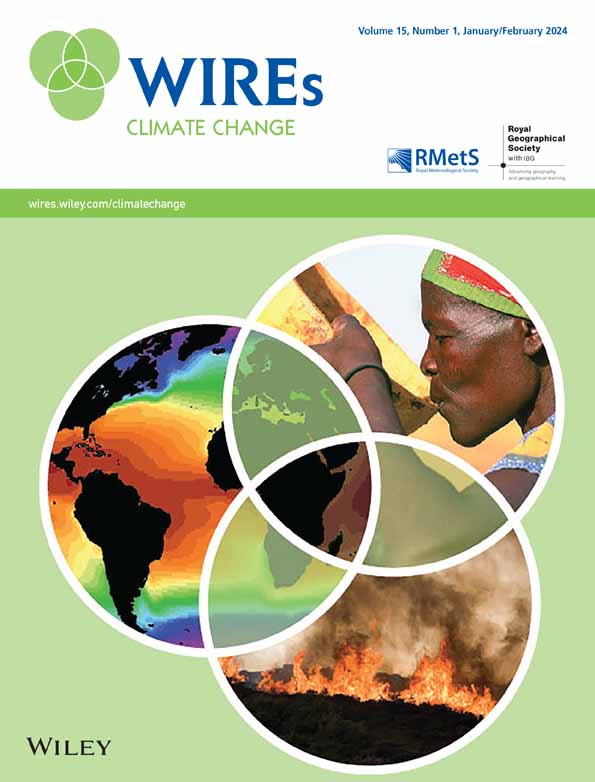Southern Ocean precipitation: Toward a process‐level understanding
IF 10.3
1区 环境科学与生态学
Q1 ENVIRONMENTAL STUDIES
引用次数: 3
Abstract
Large differences continue to exist between current precipitation products over the Southern Ocean (SO). This limits our ability to close the hydrological cycle over the SO and Antarctica, as well as limiting our understanding of a range of climatological and meteorological processes. This uncertainty arises from the absence of long‐term, high‐quality surface observational records of precipitation suitable for evaluation across a range of temporal and spatial scales. We have no “truth” for precipitation across this region that covers ~15% of the Earth's surface. These differences extend to spatial and temporal distributions and trends. Precipitation products that have been calibrated and evaluated against established observations in the Northern Hemisphere potentially may be biased due to fundamental differences in the dynamics and microphysics over the remote SO. This review first considers recent advances in our understanding of the precipitation of the SO, including spatial and temporal variability, thermodynamic phase, and response to climate drivers. We then examine several commonly used precipitation products derived from satellite observations (both passive and active), reanalyses, and merged products. Where possible, we examine the skill of these products across a range of precipitation processes that commonly occur across the SO. Finally, we look briefly at the potential of new resources, such as dual‐polarized radars and maritime disdrometers, that can be used in field campaigns specifically designed to observe precipitation at the process level, and ultimately used to evaluate precipitation products over the SO.南大洋降水:对过程水平的理解
目前南大洋(SO)上空的降水产物之间仍然存在巨大差异。这限制了我们关闭SO和南极洲水文循环的能力,也限制了我们对一系列气候和气象过程的理解。这种不确定性源于缺乏适合在一系列时间和空间尺度上进行评估的长期、高质量的降水地面观测记录。我们不知道这个覆盖地球表面约15%的地区的降水量是“真实的”。这些差异延伸到空间和时间分布和趋势。根据北半球已建立的观测结果校准和评估的降水产物可能会因偏远SO的动力学和微观物理的根本差异而产生偏差。这篇综述首先考虑了我们对SO降水的理解的最新进展,包括空间和时间变异性、热力学相位,以及应对气候驱动因素。然后,我们检查了从卫星观测(被动和主动)、再分析和合并产物中得出的几种常用降水产物。在可能的情况下,我们会在SO中常见的一系列降水过程中检查这些产品的技能。最后,我们简要介绍了新资源的潜力,如双极化雷达和海上发射场,这些资源可用于专门设计在过程层面观测降水的野外活动,并最终用于评估SO上的沉淀产物。
本文章由计算机程序翻译,如有差异,请以英文原文为准。
求助全文
约1分钟内获得全文
求助全文
来源期刊

Wiley Interdisciplinary Reviews: Climate Change
METEOROLOGY & ATMOSPHERIC SCIENCES-
CiteScore
20.00
自引率
2.20%
发文量
58
审稿时长
>12 weeks
期刊介绍:
WIREs Climate Change serves as a distinctive platform for delving into current and emerging knowledge across various disciplines contributing to the understanding of climate change. This includes environmental history, humanities, physical and life sciences, social sciences, engineering, and economics. Developed in association with the Royal Meteorological Society and the Royal Geographical Society (with IBG) in the UK, this publication acts as an encyclopedic reference for climate change scholarship and research, offering a forum to explore diverse perspectives on how climate change is comprehended, analyzed, and contested globally.
 求助内容:
求助内容: 应助结果提醒方式:
应助结果提醒方式:


